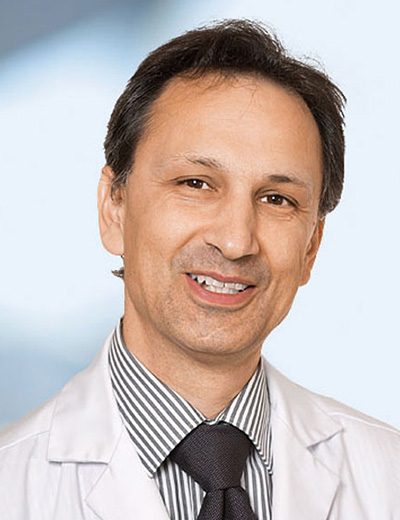Dr. R. Khatami Group (Sleep Medicine)
Group leader
Dr. Ramin Khatami
Center for Sleep Research and Sleep Medicine,
Clinic Barmelweid
Institution and Address
Clinic Barmelweid, CH-5017, Barmelweid
Phone: +41 62 857 22 28
e-mail: ramin.khatami@barmelweid.ch

Main goals
1. pathophysiology of sleep disorders and their consequences on daytime functioning, in particular emotional and cognitive sequelae of sleepiness.
2. the role of global and local sleep in normal sleep and in patients with sleep disorders.
3. mechanisms of cardiovascular risk in sleep disordered breathing.
Group members and their position
1 group leader (Ramin Khatami),
2 postdocs (Zhongxing Zhang, Armand Mensen, currently abroad),
2 MD-students (Corina Gorban, Maja Schneider)
Previous and current research
We assessed cerebral hemodynamic changes by NIRS, as well as the dynamics of spontaneous hemodynamic oscillations during all night sleep to characterize vasomotor regulation in healthy people, and in patients with SAS before and after CPAP therapy as well as in RLS/PLMS. We studied the role of dopamine and hypocretin in reward related processes in patients with narcolepsy-cataplexy, Parkinson’s disease.This project will provide unique clues of the functioning of the hypocretin and dopamine system. We also investigated the effects of TMS theta-burst stimulation on sleep and wakefulness in humans.
Future projects
To further study the recovery mechanisms of cerebral autoregulation during CPAP therapy to improve our understanding of SAS associated risk of vascular diseases. We will measure the whole cerebral hemodynamics during sleep onset using whole-brain NIRS. We are interested in probing neuro activities by measuring fast optical signals during sleep.
Techniques / methods
– fully equipped sleep diagnostic and research facilities, a professional sleep medicine team and extensive dataset of patients with different sleep disorders.
– Strong engineering, programming, and statistics, solid background in instrumentation, developing medical devices (especially in developing NIRS devices applicable to human and animal studies).
– Advanced signal analysis: non-parametric assumption free analysis for high-density EEG data sets and data analysis for all night NIRS measurements, including sleep related spontaneous frequency oscillations.
Equipment
– TMS, with theta-burst capability
– MRI-guided neuro-navigation, with mobile infra-red camera and software
– High-density EEG, 128 channels direct-current, MRI-compatible recording
– Six fully equipped video-polysomnography facilities ( 1 “zeitgeberfreie” unit)
– frequency-domain NIRS
Selected publications
1. Mensen A, Poryazova R, Schwartz S, Khatami R. Humor as a reward mechanim:event related potentials in the healthy and diseased brain. PLOS one 2014 in Press.
2. Mensen A & Khatami R. Advanced EEG analysis using threshold-free cluster-enhancement and non-parametric statistics. Neuroimage 2013;15: 111-8.
3. Ponz A, Khatami R, Poryazova R, Werth E, Boesiger P, Schwartz S, Bassetti CL. Reduced amygdala activity during aversive conditioning in human narcolepsy. Ann Neurol. 2010 Mar;67(3):394-8.
4. Ponz A, Khatami R, Poryazova R, Werth E, Boesiger P, Bassetti CL, Schwartz S. Abnormal activity in reward brain circuits in human narcolepsy with cataplexy. Ann Neurol. 2010 Feb;67(2):190-200.
5. Khatami R, Maret S, Werth E, Rétey J, Schmid D Maly F Tafti M, Bassetti CL. Monozygotic twins concordant for narcolepsy-cataplexy without any detectable abnormality in the hypocretin (orexin) pathways. Lancet 2004;363 (9416):1199-200.
Selected lectures, seminars, colloquia
Students lectures Neurology University Berne; International Virtual Epilepsy Academy Course of International League against Epilepsy (ILAE); BENESCO Lectures 2014.
Funding
Swiss National Science Foundation
Barmelweid scientific research Foundation
Industry funding
